Introduction to Email Open Rates
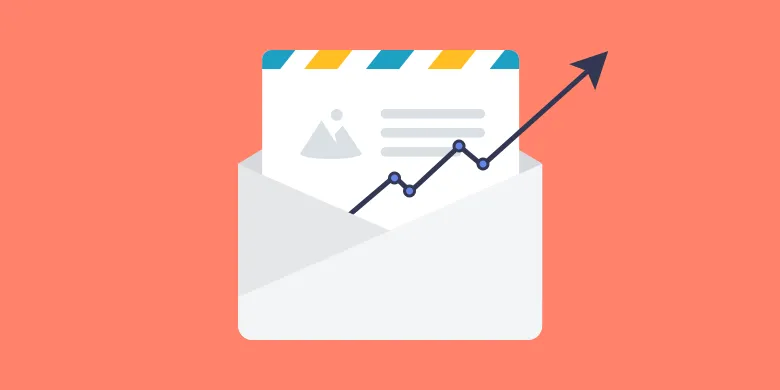
An open rate for email is a metric used to measure the percentage of recipients who open a given email out of the total number of emails sent, excluding those that bounce. It's a crucial indicator of how effectively an email campaign captures the interest of its audience, reflecting the engagement level with the content provided.
Open rates can provide insights into the success of an email marketing strategy, including the appeal of subject lines, the relevance of the email content to the audience, and the optimal timing for sending emails.
Higher open rates suggest that the emails are well-received and that the content is engaging for recipients, while lower open rates may indicate that an email marketing campaign needs adjustment in areas such as targeting, personalization, or design.
Analyzing email marketing benchmarks and aiming to surpass the industry average can help marketers refine their strategies and improve audience resonance.
What is a Good Open Rate for Email
What constitutes a "good" open rate can vary significantly depending on factors like industry, target audience, and the type of content being sent.
To provide a general benchmark, average email open rates typically range from about 15% to 25%.
- 15% to 20% is often considered a baseline for many industries, reflecting a decent level of engagement.
- 20% to 25% is regarded as a strong open rate, indicating that the email marketing strategies are well-received by the audience.
- Above 25% is exceptional and suggests that the emails are highly relevant and engaging to the recipients.
It's important to note that these percentages can fluctuate based on numerous factors, including how segmented your email list is, the relevance of your content, your industry, and how you manage your email list. For example, highly targeted emails sent to a well-maintained list in a niche industry might consistently see higher open rates.
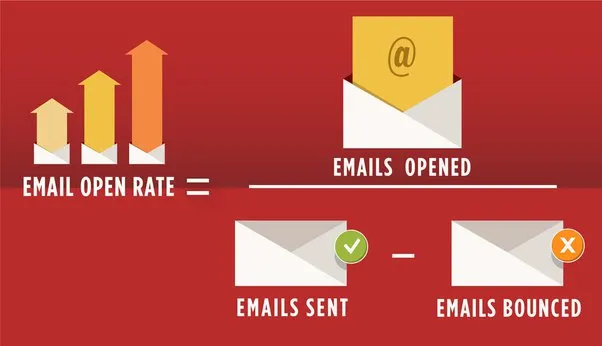
Average Email Open Rate by Industry
This data was derived from analyzing more than a billion emails across various industries using our platform, Alore.io.
Email Marketing Campaign: Benchmarks and Averages
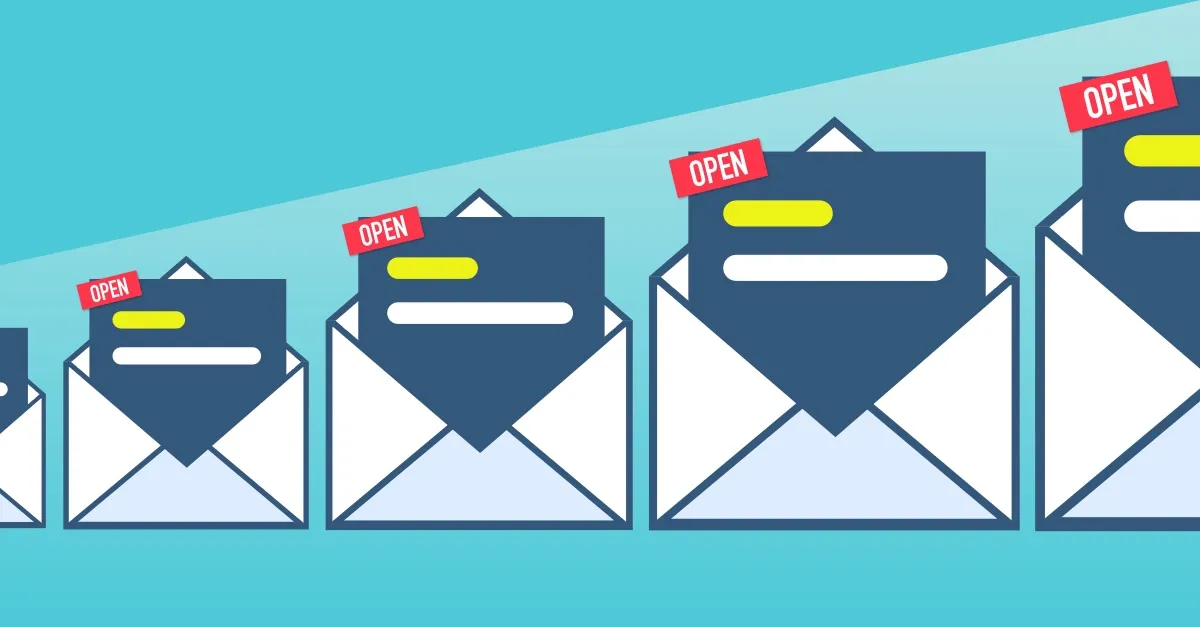
Understanding the benchmarks for email marketing campaigns can help you evaluate the effectiveness of your strategies and identify areas for improvement. These benchmarks vary by industry but provide a general guideline for what constitutes good performance.
Open Rate
1. The average open rate for email marketing campaigns is about 21%.
2. This metric indicates the percentage of recipients who open the emails sent to them, serving as a primary indicator of your email's initial appeal.
3. Improving open rates often involves optimizing subject lines for relevance and curiosity, personalizing the sender name to increase familiarity, and segmenting your list to ensure content relevance.
Click-Through Rate (CTR)
1. With an average click-through rate across industries at approximately 2.5%, CTR measures the proportion of email recipients who click on one or more links in your email.
2. A higher CTR signifies that your email content is compelling and relevant, motivating readers to take action.
3. To boost CTR, focus on clear, actionable CTAs, ensure links are visible and enticing, and provide value that aligns with your audience's interests and needs.
Conversion Rate
1. The average conversion rate from email marketing hovers around 1%.
2. This key performance metric shows the percentage of recipients who completed a desired action, like making a purchase or signing up for a webinar, after clicking a link in the email.
3. Enhancing conversion rates can be achieved by aligning email content closely with your conversion goal, optimizing the landing page experience, and using segmentation to target the most relevant audience segments.
Unsubscribe Rate
1. Typically, a healthy average unsubscribe rate is less than 0.5%.
2. It reflects the percentage of recipients who opt out of your mailing list after receiving an email, serving as a crucial indicator of the long-term interest and relevance of your content.
3. Keeping unsubscribe rates low involves regularly refreshing your content, respecting subscriber preferences regarding email frequency, and providing easy access to unsubscribe options to avoid frustration.
Bounce Rate
1. An Average Email Bounce Rate should be kept below 1%.
2. This rate measures emails that could not be delivered, categorized into "soft" bounces (temporary issues like a full inbox) and "hard" bounces (permanent problems, such as an invalid email address).
3. Reducing bounce rates requires maintaining a clean email list, promptly removing hard bounces, and verifying email addresses at the point of collection.
Spam Complaint Rate
1. Aim to keep the spam complaint rate under 0.1%.
2. This indicates the percentage of your emails marked as spam by recipients, directly impacting your sender reputation and deliverability.
3. Minimizing spam complaints involves ensuring clear consent for all subscribers, providing valuable and relevant content, and making it easy for subscribers to adjust their preferences or unsubscribe.
Factors Influencing Open Rates
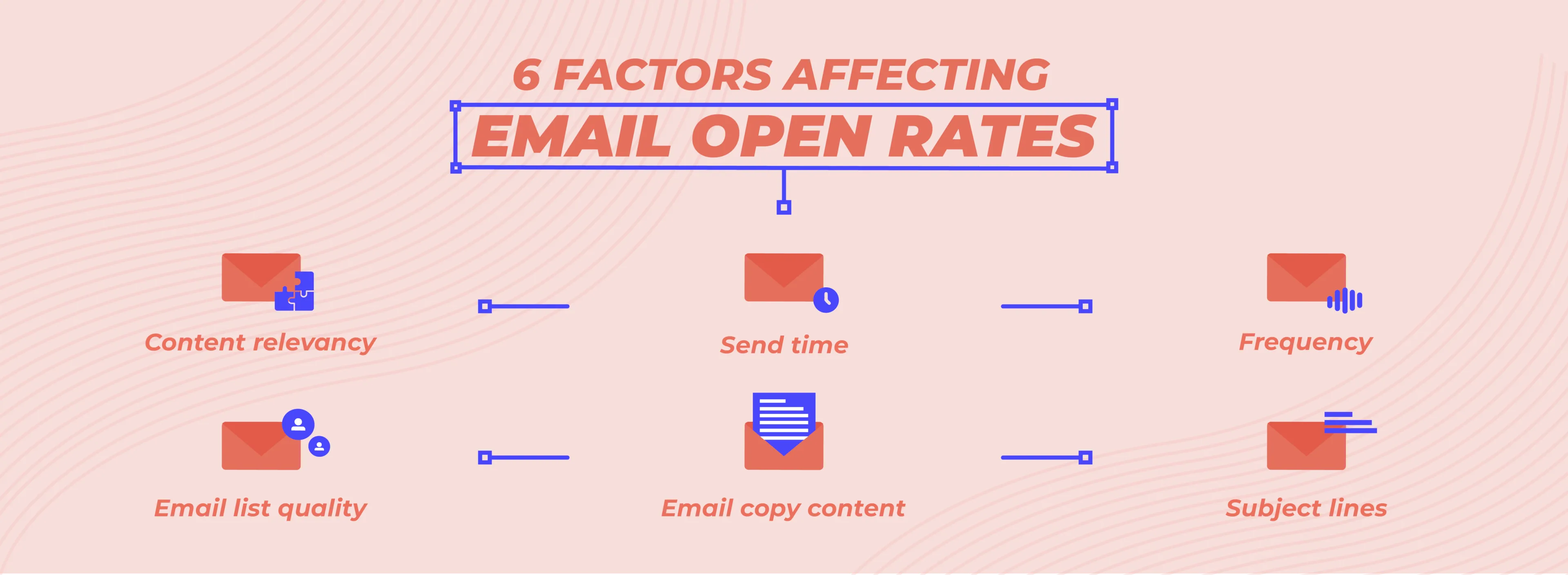
Several factors influence the open rates of email marketing campaigns, each playing a pivotal role in determining whether an email grabs the recipient's attention or gets lost in the inbox. Understanding these factors can help marketers fine-tune their strategies for better engagement.
Subject Lines
The first impression of an email is its subject line, acting as the gatekeeper to the content inside.
Personalized subject lines are known to boost open rates by up to 26%. This personal touch signals relevance, encouraging recipients to explore further.
Clarity and a sense of urgency can also enhance open rates. For instance, subject lines that clearly state the benefit of opening the email or create a time-sensitive offer can lead to higher engagement.
Sender Reputation
Emails from recognized and trusted senders are more likely to be opened. A solid sender reputation can improve open rates by ensuring emails reach the inbox rather than the spam folder.
Building this reputation involves consistently sending valuable content, maintaining low spam complaint rates, and using authenticated email domains.
Timing and Frequency
The timing of an email can significantly affect its open rate. Data shows that emails sent on Tuesdays and Thursdays typically have higher open rates, peaking around mid-morning and early afternoon.
However, optimal send times can vary based on the audience. It's crucial to analyze engagement data to identify when your specific audience is most likely to check their emails.
Frequency also matters; too many emails can lead to list fatigue and decreased engagement, whereas too few can make your audience disengage. The balance depends on your industry and the type of content you send.
Email Content and Relevance
The relevance of the email content to the recipient's interests and needs is paramount. Segmentation and personalization can increase relevance, thus boosting open rates.
For example, segmented email campaigns have been shown to result in as much as a 760% increase in revenue, highlighting the importance of targeting specific audience segments with tailored content.
Mobile Optimization
With over half of all emails being opened on mobile devices, mobile-friendly email design is no longer optional. Emails that display poorly on mobile may be quickly deleted or ignored.
Mobile optimization includes using responsive design, ensuring content is easily readable on small screens, and making call-to-action buttons large enough to be clicked on a mobile device.
Average Email Open Rates Based on the Length of the Subject Line
Subject line length plays a crucial role in email open rates. The optimal length can capture a reader's interest without being cut off in their email client.
Under 30 characters:
- Open rate: Approximately 21.9%
- Short subject lines are concise and to the point, often leading to higher open rates because they are easy to digest at a glance, especially on mobile devices.
31 to 60 characters:
- Open rate: Around 20.7%
- Subject lines within this range offer a balance, providing enough context to engage the reader while still being concise enough for most email clients.
Over 60 characters:
- Open rate: Drops to about 17.8%
- Longer subject lines often get truncated, especially on mobile devices, potentially losing the reader's interest or failing to convey the full message.
Average Email Open Rate Based on Whether an Emoji is Used or Not
The use of emojis in email subject lines has become a popular way to stand out in crowded inboxes. However, their impact on open rates can vary.
With Emoji:
- Open rate: Increases to approximately 23.2%
- Emojis can add personality and emotion to a subject line, making it stand out. They can also convey a message or sentiment quickly, appealing to the recipient's curiosity or emotions, which can lead to higher open rates.
Without Emoji:
- Open rate: Slightly lower, at about 20.4%
- While subject lines without emojis are more traditional, they can sometimes appear more professional or clear, depending on the audience and context. However, they might miss out on the added attention-grabbing element that emojis provide.
How to Calculate Your Average Email Open Rate

Calculating your average email open rate is a critical task in assessing the effectiveness of your email marketing campaigns. This metric provides insight into how well your audience is receiving your messages.
Gather Your Data:
- Start by collecting data on the total number of emails delivered and the number of opens for each campaign. Ensure to exclude bounced emails from your calculation since these were not successfully delivered to the recipient's inbox.
Understand What Counts as an 'Open':
- An 'open' is registered when the recipient either loads images in your email or clicks a link within the email. This action triggers a tracking pixel embedded in the email, recording the open event.
Calculate the Open Rate for Individual Campaigns:
- Use the formula: (Number of Opens / Number of Delivered Emails) 100. This gives you the open rate as a percentage. For instance, if you sent 1,000 emails and 200 were opened, your open rate would be (200/1,000) 100 = 20%.
Calculate the Average Open Rate:
- If looking to understand performance over time, calculate the average open rate across multiple campaigns by adding together the open rates of all campaigns and then dividing by the number of campaigns.
Compare Against Benchmarks:
- Utilize "email marketing benchmarks" to compare your average open rate against industry standards. Knowing how your campaigns perform relative to industry averages can provide context for your results.
Segment Your Data:
- Consider calculating open rates for different segments of your list, such as new subscribers vs. long-time subscribers or by demographic information. This can uncover insights into how different groups engage with your content, allowing for more targeted strategies.
Account for External Factors:
- Remember, factors like "email deliverability" can significantly impact your open rates. Ensure your emails are optimized for deliverability to accurately reflect your audience's engagement.
Regular Review and Adjustment:
- Continuously monitor your average email open rate and other critical metrics such as "click to open rates" and "email performance". Use these insights to test different strategies, such as adjusting your "subject line" or sending time, to see how they affect your open rates.
How to Improve Your Email Open Rate
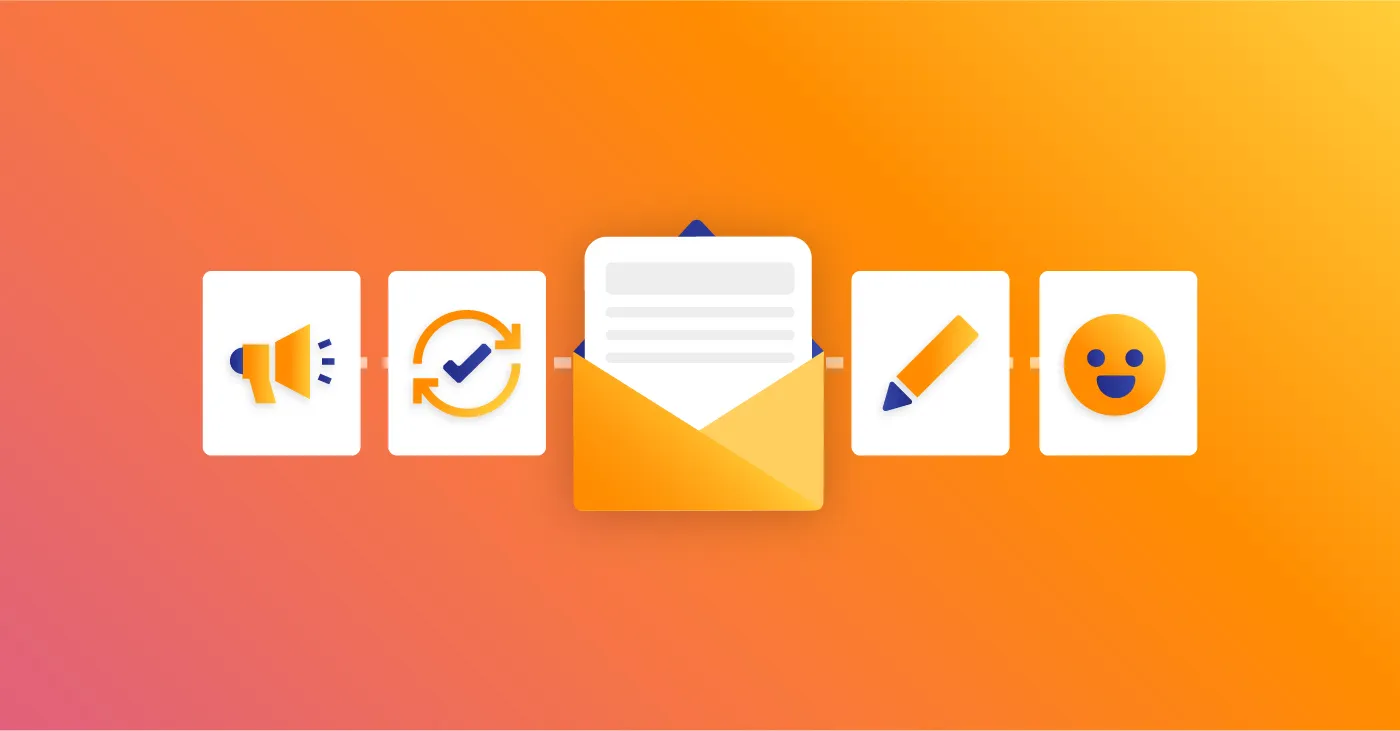
Improving your email open rate is crucial for the success of your email marketing campaigns. An impressive open rate not only signifies that your emails are reaching your audience but also that your subject lines are compelling enough to spark interest.
1. Optimize Subject Line

The subject line is the first impression your email makes on the recipient. Its optimization is crucial for improving open rates.
Personalization: Incorporating the recipient's name or other personalized details can increase open rates by up to 50%. Personalization makes the email feel more tailored and relevant to the individual.
Clarity and Urgency: Subject lines that are clear about the email's content and convey a sense of urgency or exclusivity can lead to higher open rates. Phrases like "Limited time offer" or "Exclusive access" compel recipients to act promptly.
Testing and Iteration: Employ A/B testing (subject line reflects) to experiment with different styles, lengths, and tones. This method allows you to understand what resonates with your audience, whether it's a question, a teaser, or a direct call to action.
Use of Emojis: Carefully selected emojis can make your email stand out in a crowded inbox. However, their effectiveness can vary based on your industry and audience demographics. Testing their impact on your open rates can yield insightful data.
Examples of Subject Lines
- Name Personalization: "John, Your Customized Weekly News Digest Awaits!"
- Location-Based: "Exclusive Offers for Our Beloved Chicago Foodies 🍕"
- Clear Offer: "Get 50% Off Your Next Purchase - Today Only!"
- Urgency: "Hurry, John! Your Exclusive Offer Expires in 3 Hours!"
- Emojis to Stand Out: "🚀 Launch Alert: Meet Your New Favorite Product"
- Holiday-Themed: "🎄 Early Christmas Sale Starts Now: Unwrap Your Exclusive Discount!"
- Personalization + Urgency: "John, Last Chance to Claim Your Birthday Discount 🎂 Ends Tonight!"
- Clarity + Emoji Use: "🔥 Hot Deal: 2-for-1 Pizza Night for New York Residents!"
2. Segment Target Audience

Audience segmentation allows you to tailor your email content to suit the specific interests, behaviors, and needs of different groups within your larger audience, thereby increasing the relevance of your messages and improving open rates.
Demographic Segmentation: Segmenting your email list based on demographic information (age, gender, location) enables you to customize your messaging in ways that resonate with different audience segments, potentially boosting open rates.
Behavioral Segmentation: Segmenting based on past interactions with your emails or website (click through rates, purchase history) allows for highly targeted and relevant content. For example, sending a curated product recommendation email to customers who clicked on similar items in the past.
Engagement Level Segmentation: Differentiating between new subscribers, active readers, and disengaged users enables you to tailor your approach. For instance, re-engagement campaigns can be targeted specifically at users who haven't opened emails in a while, using enticing subject lines to recapture their interest.
Utilize Advanced Tools: Modern email marketing platforms offer sophisticated segmentation tools that can analyze email marketing metrics and automatically segment your list based on various criteria, enhancing the effectiveness of your segmentation efforts.
3. Optimizing Send Times
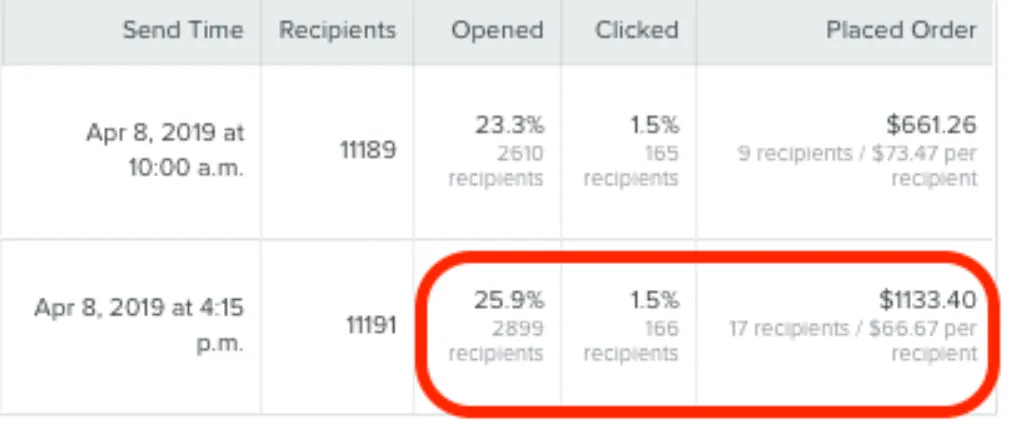
The timing of your email can significantly impact its open rate. Sending your emails when your audience is most likely to check their inbox increases the chances of your email being opened.
Analyze Past Performance: Look at your email campaign data to identify trends in open rates related to send times. This analysis might reveal specific days of the week or times of day when your audience is more engaged (click to open rate).
Consider Time Zones: If your audience is spread across different geographical locations, consider segmenting your list by time zone. Sending emails at optimized times in each region can dramatically improve overall open rates.
Use Automation Tools: Many email marketing platforms offer features to automatically send emails at the optimal time for each recipient, based on their past engagement behavior (marketing automation).
Test and Iterate: Regularly test different sending times and monitor the impact on your open rates. This continuous experimentation will help you refine your strategy over time.
4. Improving Email Deliverability
Email deliverability is the foundation of a successful email marketing campaign. If your emails don't reach the inbox, they can't be opened, making all your efforts futile.
Maintain a Clean Email List: Regularly remove inactive subscribers and addresses that consistently bounce. This helps maintain a high sender reputation, which is crucial for deliverability (email deliverability).
Authenticate Your Emails: Use SPF, DKIM, and DMARC records to authenticate your emails. This verifies that your emails come from a trusted source, reducing the likelihood of them being marked as spam.
Avoid Spam Triggers: Certain words, phrases, and formatting can trigger spam filters. Avoid using excessive capitalization, multiple exclamation marks, and known spam words in both your subject lines and email content.
Engage In Regular Testing: Utilize tools to test your emails before sending them to your entire list. These tests can identify potential deliverability issues, allowing you to make necessary adjustments beforehand.
Monitor Your Sender Reputation: Regularly check your IP address and domain against blacklists. A poor sender reputation can affect your deliverability. Tools and services are available to help you monitor and, if necessary, rehabilitate your reputation.
5. Utilizing Marketing Automation
Marketing automation allows for the sending of timely, relevant, and personalized emails to your audience, enhancing the likelihood of them being opened.
Personalization at Scale: Marketing automation tools enable you to dynamically insert personalized content into your emails based on the recipient's past interactions, preferences, or demographic information, making each email feel uniquely tailored (marketing automation).
Behavior-triggered Emails: Set up automated emails triggered by specific actions, such as a welcome email after signing up or a follow-up email after a purchase. These timely, relevant messages are more likely to be opened and engaged with.
Optimize Send Times: Some automation platforms offer the ability to send emails at the optimal time for each individual recipient, based on when they're most likely to engage (click to open rate).
6. Encouraging Engagement

Increasing subscriber engagement not only boosts open rates but also strengthens your relationship with your audience, fostering loyalty and encouraging continued interaction.
Interactive Content: Incorporate polls, surveys, or interactive elements in your emails to invite active participation from your recipients (subscriber engagement).
Incentivize Responses: Encourage your subscribers to reply to your emails with feedback or questions. This two-way communication can improve engagement and help fine-tune your email strategy.
Clear and Actionable CTAs: Ensure every email has a clear call-to-action, guiding recipients on what to do next. Whether it's reading a blog post, signing up for a webinar, or taking advantage of a special offer, a compelling CTA can significantly improve your engagement rates.
7. Leveraging Analytics

The use of advanced analytics helps in understanding your email campaign performance, allowing for data-driven decisions that can enhance open rates and overall effectiveness.
Deep Dive into Metrics: Regularly review your email marketing metrics, such as open rates, click-through rates, conversion rates, and more, to identify trends and areas for improvement (email marketing metrics).
Segmentation Analysis: Use analytics to segment your audience more effectively. Analyzing behavior patterns can help you tailor your content more precisely, improving relevance and open rates (targeted content).
A/B Testing Insights: Leverage analytics to conduct A/B tests on various email elements, including subject lines, email content, layout, and send times. Utilizing data to understand what works best will guide your strategy moving forward (subject line reflects).
Monitor Deliverability Rates: Keep an eye on your deliverability rates to ensure your emails are reaching inboxes. Analytics tools can provide insights into potential issues affecting deliverability, allowing you to take corrective action (email deliverability).
Best Practices for Click-Through Rates, Conversion Rates, and Bounce Rates to Improve Email Marketing Strategy
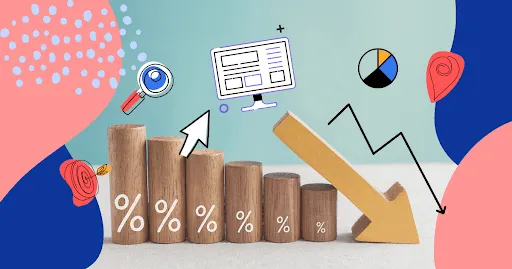
Improving your email marketing strategy necessitates a focus on optimizing click-through rates (CTR), conversion rates, and minimizing bounce rates. These metrics are pivotal indicators of your email campaign's performance and effectiveness in engaging your audience and driving desired actions.
Best Practices for Click-Through Rates (CTR)
Click-through rates signify the percentage of email recipients who clicked on one or more links contained in your email, serving as a direct measure of your email content's engagement level.
Engage with Personalized Content
Personalization increases relevance, which can significantly boost CTR. Use data like past purchases, location, or browsing behavior to tailor your messages.
Example: Emails with personalized subject lines have a 26% higher chance to be opened, directly impacting CTR.
Optimize Your Call-to-Action (CTA)
Your CTA should be clear, compelling, and easy to find. A/B testing different CTA texts, colors, and placements can identify the most effective approach.
Example: Including a button instead of a text link can increase conversion rates by up to 28%.
Utilize Segmentation
Segmenting your email list allows for more targeted communications. Tailored messages to specific segments, such as "email marketers" or "digital marketing" professionals, ensure content relevance and drive higher engagement.
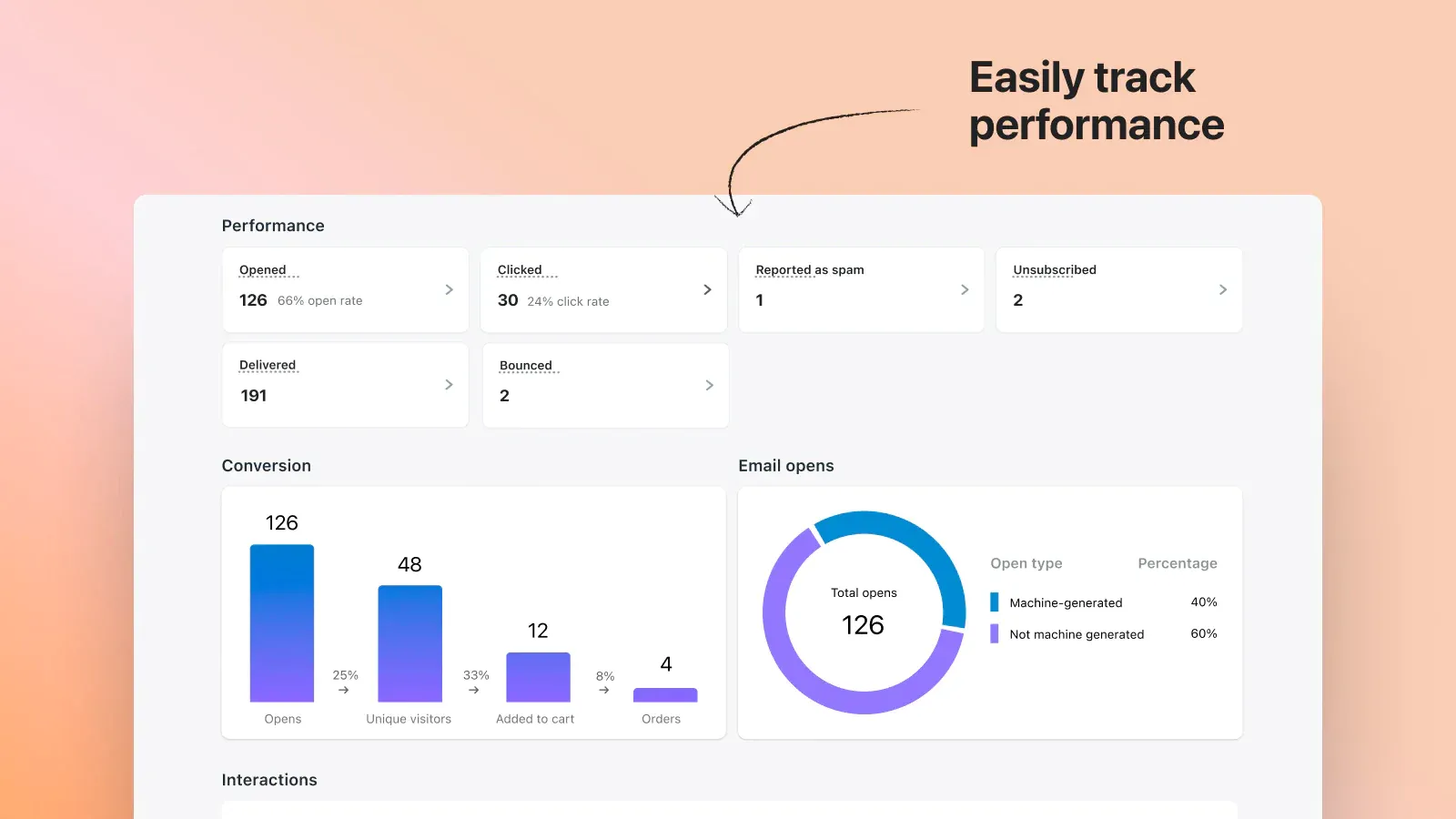
Best Practices for Conversion Rates
Conversion rates track the percentage of email recipients who clicked on a link within your email and completed a desired action, offering a direct insight into the effectiveness of your email in driving measurable outcomes.
Align Email Content with Landing Pages
Consistency between your email message and the landing page reduces friction and increases the likelihood of conversion.
Example: Matching the headline and primary call-to-action between the email and landing page can improve conversion rates by over 50%.
Offer Clear Value
Clearly communicate the value proposition and benefits in your email. Why should the recipient take the desired action?
Example: Highlighting exclusive offers or unique benefits can increase conversions by emphasizing the value to the recipient.
Streamline the Conversion Process
Reduce barriers to conversion by simplifying the process. For instance, limit the number of fields in a signup form.
Example: Reducing form fields from ten to six can increase conversion rates by 15%.
Best Practices for Bounce Rates
Bounce rates indicate the percentage of your emails that were not delivered to the recipient's inbox, which can negatively impact your sender reputation and email deliverability.
Maintain Email List Hygiene
Regularly clean your email list by removing invalid or inactive addresses. This improves deliverability and reduces bounce rates.
Example: Regular list cleaning can reduce bounce rates by up to 10%.
Authenticate Your Email
Using protocols like SPF, DKIM, and DMARC can help verify your emails, improving deliverability and reducing bounces.
Example: Authentication can improve inbox placement rates by up to 90%.
Segment and Personalize
Beyond engagement, segmentation and personalization can also impact deliverability. Relevant emails are less likely to be marked as spam.
Example: Targeted emails based on user behavior or demographics can decrease bounce rates by ensuring content relevance.
Concluding Thoughts on Email Open Rate
Achieving a good open rate in email marketing campaigns is essential, regardless of your industry. Whether you're in agriculture and food services or the architecture and construction industry, tailoring your approach to fit your specific audience's needs is key.
Effective strategies include crafting compelling subject lines and segmenting your audience to ensure relevance and engagement. By focusing on these areas and understanding the unique preferences of your sector, you can significantly improve your email marketing performance, driving higher open rates and better overall engagement with your target audience.

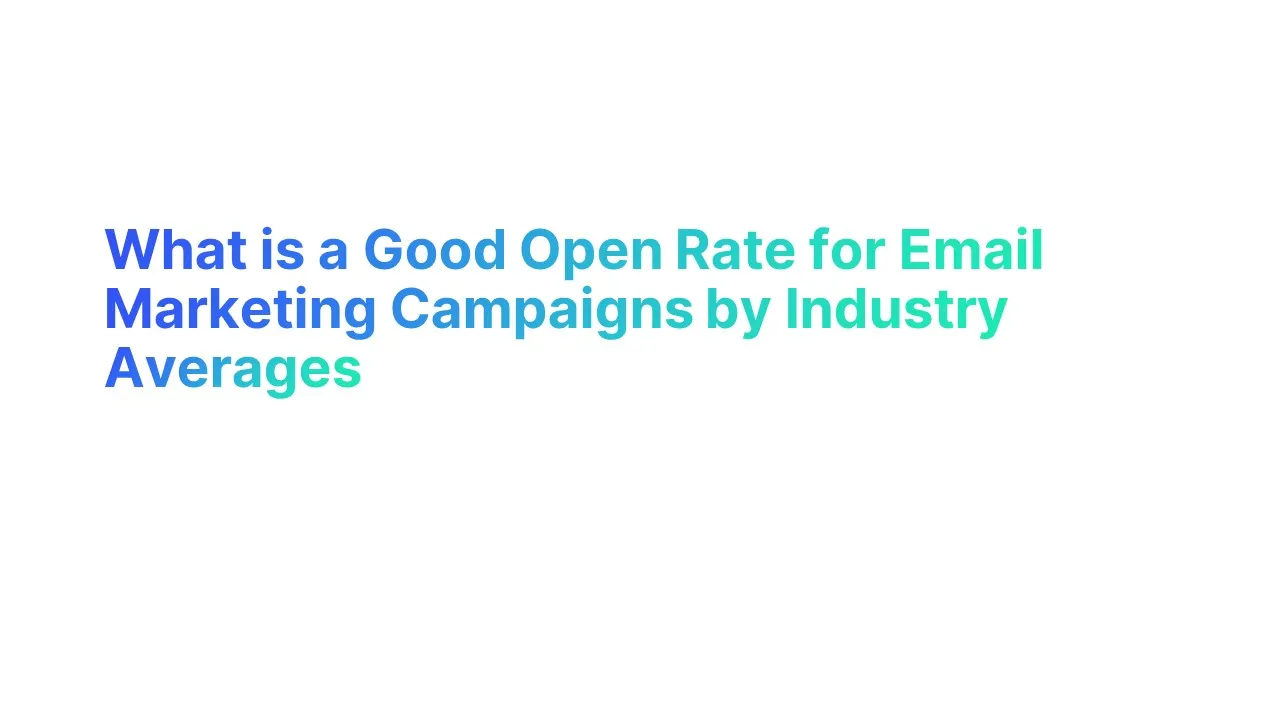



.webp)


